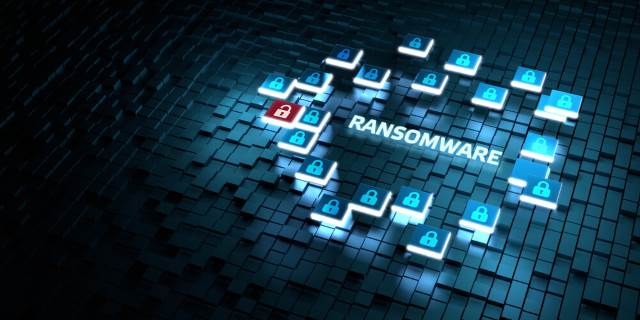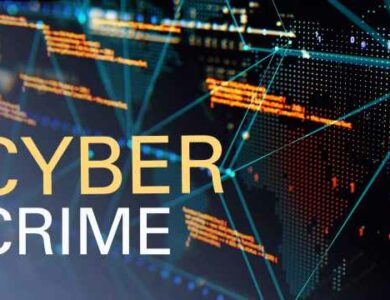Into the Breach: Ransomware Protection Redefined for Unmatched Security

In the vast landscape of cyberspace, where our digital lives interweave with the virtual realm, a menacing force has emerged, threatening to disrupt, dismantle, and hold hostage our most precious commodity—data. Ransomware, the digital highwayman of the 21st century, has evolved from a mere nuisance to a full-blown epidemic, wreaking havoc across industries, institutions, and individual lives.
The Alarming Statistics: A Glimpse into the Ransomware Menace
As we embark on this exploration of ransomware protection, it’s crucial to grasp the scale of the threat we face. In 2022 alone, there were over 305 million reported ransomware attacks globally, marking a staggering 93% increase from the previous year. The financial toll of these attacks has surpassed the $20 billion mark, with hackers becoming increasingly sophisticated in their methods.
Evolution of Ransomware Tactics: A Cat-and-Mouse Game in Cyberspace
The history of ransomware reveals a dynamic evolution, akin to a strategic game of cat and mouse between cybercriminals and cybersecurity experts. From the early days of basic encryption schemes to the present era of polymorphic malware and ransomware-as-a-service (RaaS) platforms, malicious actors have continually adapted to exploit vulnerabilities faster than defenses can be fortified.
Targets on the Radar: Industries in the Crosshairs
No sector remains untouched, as ransomware adversaries cast a wide net to ensnare lucrative targets. Healthcare institutions, critical infrastructure, financial services, and even governmental agencies have fallen prey to the insidious tactics of these digital extortionists. The frequency of attacks on critical infrastructure alone has doubled in the last two years, posing a substantial risk to the very foundations of modern society.
Cryptocurrency: The Ransomware Currency of Choice
The advent of cryptocurrency, particularly Bitcoin, has provided ransomware operators with an untraceable and easily transferrable means of receiving payments. This shift in currency preference has contributed to the proliferation of ransomware attacks, allowing cybercriminals to operate in the shadows with increased anonymity.
The Dark Web Marketplace: Where Ransomware Finds Its Roots
Behind the scenes, a thriving underground marketplace fuels the ransomware economy. Here, malicious software is bought, sold, and even leased, democratizing cybercrime and enabling even the least tech-savvy individuals to launch sophisticated attacks. As we delve deeper into the labyrinth of ransomware protection, understanding the intricacies of this clandestine digital bazaar becomes imperative.
A Glimpse into Notorious Ransomware Families
Ransomware is not a one-size-fits-all threat; it comes in various strains, each with its unique characteristics and methods. Notable families like WannaCry, Ryuk, and Maze have left an indelible mark on the cybersecurity landscape, causing widespread disruptions and financial losses.
The Imperative for Ransomware Protection: A Call to Arms
As we navigate the perilous waters of ransomware, the imperative for robust protection strategies becomes undeniable. Join us on this expedition into the heart of digital defense, where we unravel the complexities of ransomware, analyze the latest attack vectors, and equip ourselves with the knowledge to safeguard our digital future. In a world where every click carries consequences, arming ourselves against the rising tide of ransomware is not just a choice—it’s a necessity.
Understanding Ransomware:
Ransomware, a portmanteau of “ransom” and “software,” represents a class of malicious programs designed to encrypt files on a victim’s device, rendering them inaccessible. Perpetrators then demand payment, typically in cryptocurrency, for the release of the files. To effectively protect yourself against ransomware, it’s essential to grasp the various forms it can take and the diverse entry points it exploits.
Common Types of Ransomware:
1. Crypto Ransomware:
This variant encrypts files, demanding payment for decryption keys.
2. Locker Ransomware:
Locks users out of their systems entirely, denying access to files and applications.
3. Scareware:
Operates by presenting false claims or threats to coerce victims into paying a ransom.
Entry Points for Ransomware:
1. Phishing Emails:
Deceptive emails that trick users into clicking on malicious links or downloading infected attachments.
2. Malvertising:
Malicious online advertisements that can deliver ransomware when clicked.
3. Outdated Software:
Unpatched software presents a vulnerable entry point for ransomware, making regular updates crucial.
Building Robust Ransomware Defenses:
1. Regular Backups:
Frequent backups constitute your primary defense against ransomware. Store backups on external devices or secure cloud services, and automate backup processes for consistency.
2. Keep Software Updated:
Regularly update operating systems and software to patch vulnerabilities that ransomware exploits. Enable automatic updates when possible.
3. Install a Reliable Antivirus Program:
Choose a reputable antivirus solution equipped with real-time scanning and ransomware detection features. Keep the antivirus program updated for optimal protection.
4. Email Security Measures:
Educate yourself on identifying phishing emails, and avoid clicking on suspicious links or downloading attachments from unknown sources. Implement email filtering tools to reduce the risk.
5. Use a Firewall:
Enable a robust firewall to monitor and control incoming and outgoing network traffic. This adds an extra layer of defense against ransomware. Enabling a robust firewall is pivotal in monitoring and controlling incoming and outgoing network traffic. A well-configured firewall adds an extra layer of defense against ransomware, acting as a barrier between your internal network and potential threats from the outside world.
6. Employee Training:
Educate employees about the risks of ransomware and the importance of cybersecurity hygiene. Regular training sessions can keep everyone informed and vigilant.
Ongoing education is vital in the fight against ransomware. Ensure that employees are aware of evolving threats and understand the critical role they play in maintaining cybersecurity. Regular training sessions should cover not only identifying phishing attempts but also the importance of strong password management and the potential risks associated with external devices.
Dealing with Ransomware Attacks:
1. Disconnect from the Network:
If a ransomware attack is suspected, disconnect from the network immediately to prevent the malware from spreading to other devices.
Rapid response is essential in mitigating the impact of a ransomware attack. Isolate affected devices from the network to prevent the malware from spreading further. This isolation step buys time for professionals to assess the situation and formulate an effective response strategy.
2. Report the Incident:
Notify your IT department or a cybersecurity professional promptly. Early detection can limit the damage and increase the chances of recovery.
Collaborate closely with your IT department or engage a cybersecurity professional to conduct a thorough analysis of the incident. Gathering detailed information about the attack, such as the ransomware variant, entry point, and affected systems, is crucial for both immediate response and future prevention.
3. Do Not Pay the Ransom:
Resist the urge to pay the ransom, as it does not guarantee the retrieval of your files and funds criminal activities. Explore alternative options for data recovery.
The ethical and strategic decision is to avoid paying the ransom. Paying does not guarantee the retrieval of files, and it further funds criminal activities. Explore alternative options for data recovery, including consulting with cybersecurity experts, using decryption tools, or restoring from unaffected backups.
Advanced Ransomware Protection:
1. Endpoint Detection and Response (EDR):
Implement EDR solutions to detect and respond to ransomware at the endpoint level, minimizing the impact on your systems.
EDR solutions provide real-time monitoring, allowing organizations to detect and respond to ransomware threats swiftly. These tools often include advanced features such as behavior analysis, threat intelligence integration, and automated response capabilities.
2. Data Encryption:
Encrypt sensitive data to make it unreadable to unauthorized users. This adds an extra layer of protection, even if ransomware manages to infiltrate your systems.
Elevate your data protection strategy by implementing robust encryption measures. Encrypting sensitive data ensures that even if ransomware manages to infiltrate your systems, the compromised information remains unreadable, minimizing the potential impact of a breach.
3. Incident Response Plan:
Develop a comprehensive incident response plan outlining the steps to take in the event of a ransomware attack. Regularly test and update this plan to ensure its effectiveness.
An incident response plan is only effective if regularly tested and updated. Simulate ransomware scenarios through drills and tabletop exercises to evaluate the readiness of your team. Update the plan based on lessons learned from each exercise and evolving threat landscapes.
As the threat of ransomware continues to evolve, staying informed and proactive is paramount. By integrating these robust protection measures into your digital lifestyle, you significantly reduce the risk of falling victim to ransomware attacks. Prevention is the best defense in the ongoing battle against cyber threats. Stay vigilant, stay informed, and safeguard your digital world against the ever-present menace of ransomware. In the face of an ever-evolving threat landscape, fortifying your defenses today ensures a secure digital future tomorrow.








